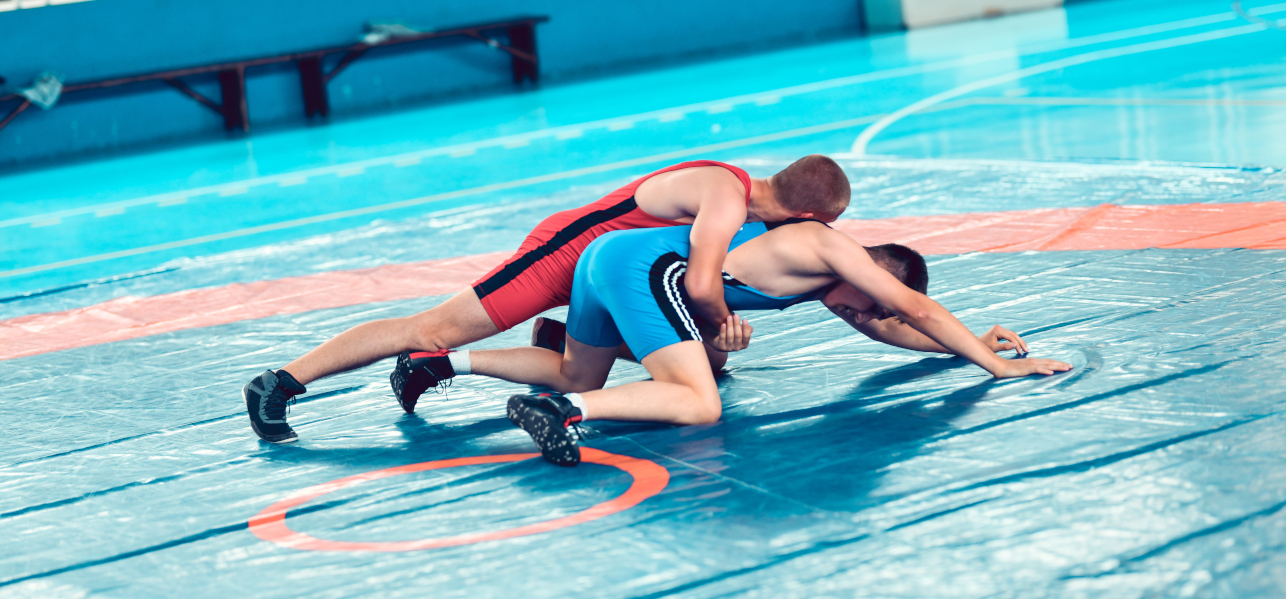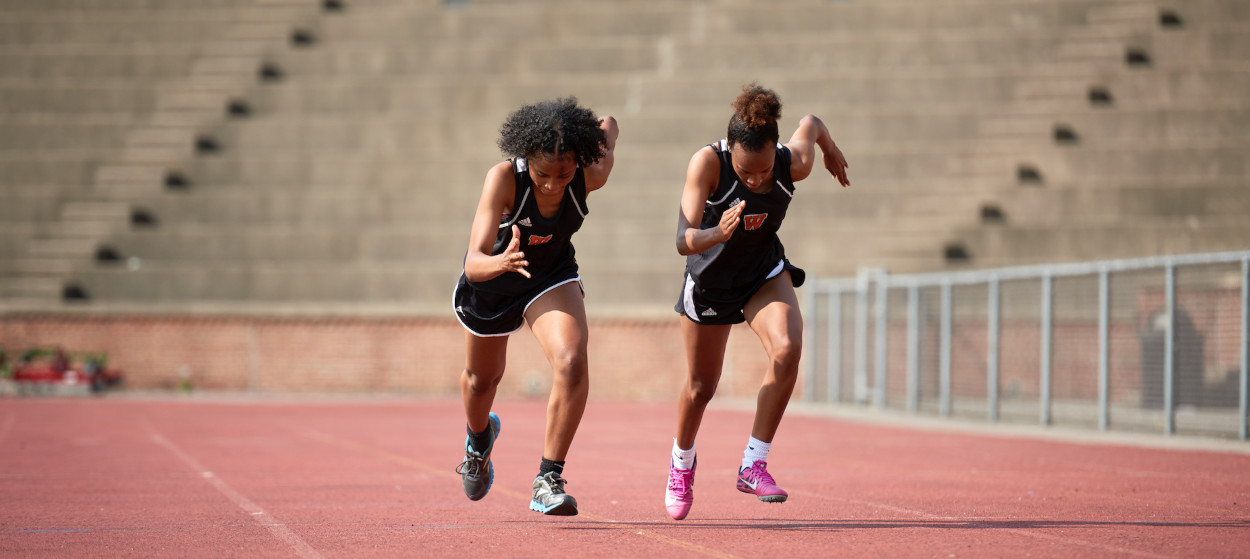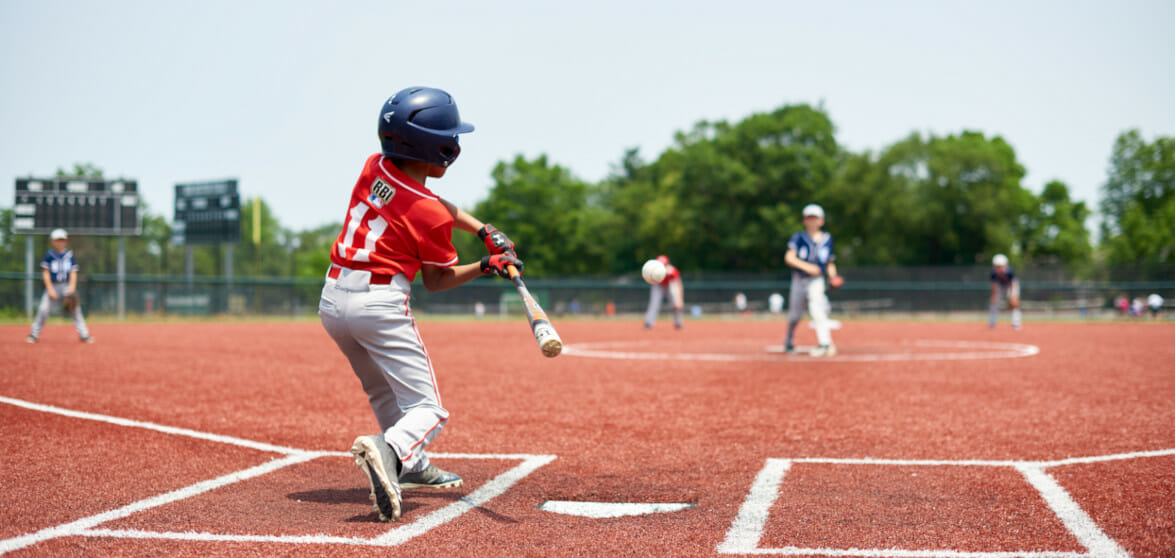My daughter Riley is a gymnast. She started when she was eight years old, and we knew almost immediately that this was her sport. That’s why we decided after less than a year of classes, she could join the trampoline and tumbling competition team.
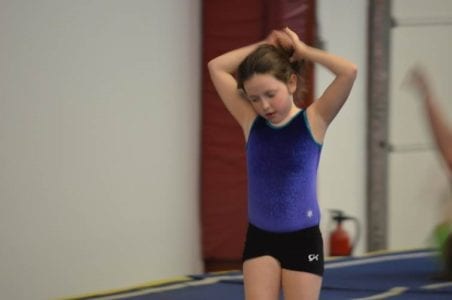
After a few years, Riley’s original gym closed. So she decided that she’d checkout the more traditional gymnastics (floor, balance beam and high bars) at Kid’s First Sports Center to see if she liked it. Riley was pretty certain she would continue with trampoline and tumbling and had even let the trampoline and tumbling coach know of her plans, but wanted to at least check it out. She was so excited for her first day. I wanted to stay and watch her practice, but one of my other daughters had a tennis match at the same time, so I dropped Riley off and told her I’d be back in a bit.
“There’s been a little incident.”
Just 10 minutes after I dropped Riley off, standing in the parking lot at tennis, I got a call; “Are you in the building? There’s been a little incident.”
Riley was on her way to the emergency room. They said she fell off the high bars and landed on her arm awkwardly, injuring her left elbow. I got back in the car and headed toward Cincinnati Children’s Liberty Campus to meet the ambulance.
I’d be lying if I said I didn’t have a slight feeling of anxiety as I walked into the ER. I kept thinking about how scared she must be. Looking back on it now though, I should have known she would handle it as well as she did. She’s tough. The medical staff later told me she didn’t cry once. I wish I could say the same for myself. I took one look at her swollen left arm and thought ‘yeah I don’t need to see that anymore!’
The doctors and nurses at Cincinnati Children’s were so kind and patient with us while they assessed the injury and stabilized Riley’s arm. We learned right away that she had a complete dislocation of her left elbow and that it could require surgery to correct. We later learned that there was a fracture as well. Riley and I both cringed when we heard that. I was worried about the chance of complications because she hadn’t finished growing yet. But she was only worried about her gymnastics career.
Because her injury affected her growth plates, Riley was referred to Dr. Charles Mehlman, a Pediatric Orthopaedic Trauma specialist. He helped us determine our options and best next steps. His treatment plan involved immobilization and rehab, but luckily, no surgery.
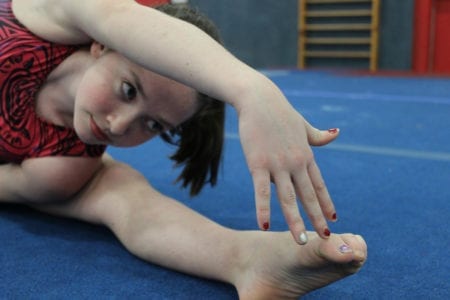
Uncertainty persists
We confidently moved forward with the treatment plan, but I was still unsure about what this injury would mean for Riley as a gymnast. She was only 11, so I had no doubt she would recover fully but it was much harder for me to picture her back in the gym. The thought of all that jumping and tumbling made me nervous.
I asked myself countless times if letting Riley return to the sport she loved was the right call, especially since it was that sport that put us in this predicament in the first place. But Dr. Mehlman said something that still sticks with me today. He said, “there is a slight chance she is going to reinjure this arm, but do you give up something you love for that little bit of a chance?”
If Dr. Mehlman had told me Riley was done, I don’t know if I would have challenged it. As a mother, it’s inherently important for me to protect my children, sometimes from themselves. I was afraid that, if given the chance to get back on the tumbling track, Riley would approach it how she approaches everything she does – at full speed. I mean what 11 year-old thinks about long-term consequences? But hearing her doctor tell us it would be okay for her to return to gymnastics after a tough rehab plan put me at ease.
She was put in sling for a month before she started rehab, which she did twice a day for a month. It wasn’t easy, but I think her desire to get back to gymnastics motivated her through it.
Unrestricted, unrelenting
When she finally got an unrestricted release I couldn’t drive her back to the gym fast enough. I was hesitant at first, I tried asking her to maybe skip the tumbling events and just stick to the trampoline. I figured there would be a lot less risk of re-injury to her arm on the trampoline. But she wanted no part of that plan – go figure!
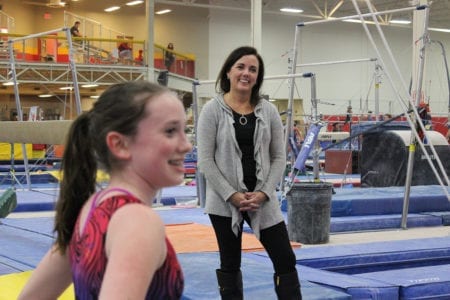
It did take me some time to get used to seeing her back out there in the same gym where she was injured just three months prior, but I reminded myself that she’s doing what she loves.
Riley placed second in the national competition that year in Tulsa by only a tenth of a point, truly overcoming significant odds. I think that medal is a testament both to my daughter’s drive and dedication, and to the expert care we found with the team in Sports Medicine and Orthopaedics at Cincinnati Children’s.
Her whole medical team considered her a person and an athlete, not just an injury. She was young at the time of her injury and they instilled confidence in me that her growth plates would be protected every step of the way. They not only restored her physical ability to be a gymnast, but restored her – and my – confidence in that elbow and its strength.
We will continue to check in with Dr. Mehlman at least once a year until she is done growing. For now she continues to compete at a high level without any lingering pain or complications, which I do believe is largely because we were able to avoid surgery. That treatment option really helped both of us cope with one of the most trying experiences of both of our lives.
I don’t know how long Riley will be in the sport, but she loves it and I can’t see her giving it up anytime soon.
If you have questions about our program, or would like to request an appointment, please contact our FAST Fracture Clinic.

